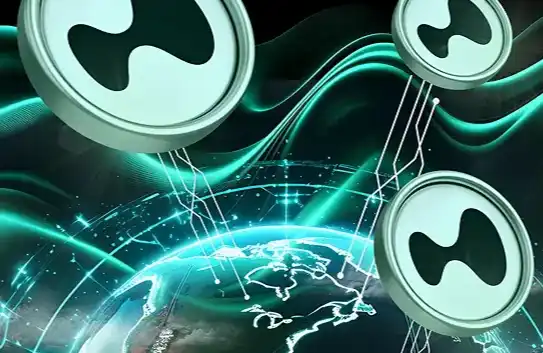Google: Why We Need Our Own Blockchain (GCUL)
Source: Google
Original Title: "Beyond Stablecoins: The Evolution of Digital Currency"
Editor's Note: Internet giant Google has officially announced their own native blockchain network, GCUL (Google Cloud Universal Ledger). From the introduction, we can roughly see Google's idea: due to the rise of stablecoins and the potential trillion-dollar outlook, Google does not want to miss out on this next-generation Fintech wave, so they have built GCUL, a network that is more like a stablecoin consortium chain. Rich Widmann, Google's web3 lead, stated that this is the result of Google's years of research and development, which can provide financial institutions with outstanding performance, trust neutrality, and support for Python-based smart contracts. Google has also written an article explaining their thoughts on GCUL, and the following is the original Google text:
In 2024, stablecoins experienced significant growth, with transaction volume tripling from the original transaction volume. Organic transaction volume reached $5 trillion, and total transaction volume reached $30 trillion (data source: Visa, Artemis). In comparison, PayPal's annual transaction volume is approximately $1.6 trillion, and Visa's annual transaction volume is around $13 trillion. The supply of stablecoins pegged to the dollar has grown to over 1% of the total dollar supply (M2) (data source: rwa.xyz). This sharp increase clearly indicates that stablecoins have firmly established themselves in the market.
The demand for better service is driving a significant transformation in the $3 trillion payment market. Stablecoins offer seamless fund transfers between digital wallets without the complexity, inefficiency, and cost burden of traditional payment systems. New solutions have also emerged in capital markets to facilitate the payment aspects of digital asset trading, enhancing transparency and efficiency while reducing costs and settlement times.
This article explores the continuously evolving financial landscape and proposes a solution to help traditional finance and capital markets not only catch up but also lead the trend.
Private Money: Similarities Between Paper Currency and Stablecoins
Stablecoins have many similarities with privately issued banknotes widely used in the 18th and 19th centuries. Banks issued their own banknotes, each with varying degrees of reliability and oversight. These banknotes made transactions easier as they were more portable, countable, and redeemable without the need for weighing or assessing the purity of gold. To increase people's trust in this new form of currency, the banknotes were backed by reserve funds and promised to be exchangeable for real-world assets (most commonly precious metals). The number and liquidity of transaction wallets saw a significant increase. Most banknotes were only recognized in the local area near the issuing bank. For long-distance settlements, they were exchanged for precious metals or cleared between banks. To reap these benefits, users accepted the risk of a single bank default and value fluctuations based on the perceived solvency of the issuing bank, after weighing the pros and cons.
Fractional Reserve Banking and Regulation
Subsequently, the economy experienced significant growth, accompanied by financial innovation. Economic expansion required a more flexible money supply. Banks noticed that not all depositors would demand withdrawals simultaneously, leading them to realize that they could profit by lending out part of their reserve funds. The fractional reserve banking system emerged, where the quantity of banknotes in circulation exceeded the reserve funds held by the bank. Mismanagement, high-risk lending practices, fraud, and economic downturns resulted in bank runs, bankruptcies, crises, and depositor losses. These failures prompted enhanced regulation and supervision of currency issuance. With the establishment and expansion of central bank charters, these regulations created a more centralized system, improved banking practices, set forth stricter rules, enhanced stability, and gained public trust in the monetary system.
Modern Currency System: Commercial Bank and Central Bank Money
Our current monetary system operates on a dual-currency model. Commercial bank money, issued by commercial banks, is essentially a liability (promissory note) of a specific bank, subject to comprehensive regulation and oversight. Commercial banks operate on a fractional reserve model, meaning they hold only a portion of deposits as reserve funds in central bank currency, lending out the rest. Central bank currency is a liability of the central bank and is deemed risk-free. Interbank liabilities are settled electronically using central bank currency (through RTGS systems like FedWire or Target2). The public can only engage in electronic transactions using commercial bank money, with the use of cash (physical central bank currency) in transactions decreasing. In a single currency, all commercial bank monies are fungible. The focus of bank competition is on services rather than the quality of money they provide.
Today's Financial Infrastructure: Fragmented, Complex, Costly, and Slow
With the rise of computers and networks, monetary transactions are electronically recorded, eliminating the need for cash. Liquidity, access, and product innovation have reached new heights. Solutions vary by country/region, and cross-border transactions still face challenges both economically and technically. Correspondent banking requires holding idle funds at partner banks, while the complexity of infrastructure forces banks to limit partnerships. As a result, banks are stepping back from correspondent relationships (reduced by 25% over the past decade), meaning longer payment chains, slower payment speeds, and higher payment costs. Convenient solutions that abstract away this complexity (such as global credit card networks) are expensive for businesses in terms of payment fees. Moreover, most enhancements are focused on the front end, with slow progress in innovating payment processing infrastructure.
The fragmented financial system has increased trade frictions and slowed economic growth. The Economist estimates that by 2030, the macroeconomic impact of fragmented payment systems on the global economy will result in a staggering $2.8 trillion loss (2.6% of global GDP), equivalent to over 130 million jobs (4.3%).
Fragmentation and complexity have also harmed financial institutions. In 2022, the annual maintenance cost of outdated payment systems is $37 billion, projected to rise to $57 billion by 2028 (IDC Financial Insights). Furthermore, the inability to offer real-time payments, inefficiencies, security risks, and high compliance costs exacerbate direct revenue losses (75% of banks struggle to implement new payment services in outdated systems, 47% of new accounts at FinTechs and neo-banks).
High transaction fees can hinder international business growth, impacting profitability and valuation. Companies that process large volumes of payments are highly motivated to reduce their payment processing fees. Take Walmart, for example, reducing its approximately $10 billion annual payment processing fee (assuming an average payment processing fee rate of 1.5% on $700 billion in revenue) to $2 billion could increase earnings per share and stock price by over 40%.
New Infrastructure, New Possibilities
The experimentation in the Web3 space has given rise to promising technologies like Distributed Ledger Technology (DLT). These technologies, by providing globally available always-online infrastructure, offer a new way for financial system transactions, with advantages including support for multiple currencies/assets, atomic settlement, and programmability. The financial industry's paradigm has begun to shift from isolated databases and complex messaging to transparent, immutable shared ledgers. These modern networks streamline interactions and workflows, eliminate independent, costly, and slow reconciliation processes, and remove the technological complexities that hinder speed and innovation.
Disruptor: Stablecoins
Stablecoins operate on decentralized ledgers, enabling nearly instantaneous, low-cost global transactions free from traditional banking constraints (time, geography). This freedom and efficiency have propelled their explosive growth. Their high rates have also made them very lucrative. Profits, growth, and increasing confidence in the underlying technology are attracting venture capital and payment processing company investments. Stripe acquired Bridge to allow online merchants to accept stablecoin payments. Additionally, Visa offers capabilities for partner payments and settlement using stablecoins. Retailers (e.g., Whole Foods) are now accepting and even encouraging the use of stablecoin payments to reduce transaction fees and receive payments instantly. Consumers can obtain stablecoins within seconds.
Stablecoins face many challenges.
· Regulation: Unlike traditional currency, stablecoins lack comprehensive regulation and oversight. The U.S. is increasing regulatory efforts, and the EU is applying electronic money rules to electronic money tokens through MICAR. Deposit protection measures do not apply to stablecoins.
· Compliance: Ensuring compliance with anti-money laundering and sanctions laws when anonymous accounts transact on public blockchains is a challenging task (In 2024, 63% of the $513 billion in illicit transactions on public blockchains involved stablecoins).
· Fragmentation: There is a wide variety of stablecoin types operating on different blockchains, requiring complex bridging and conversion. This fragmentation results in reliance on automated bots for arbitrage and liquidity management, with transactions from these bot accounts accounting for almost 85% of total volume (Organic volume is $5 trillion, while total volume is $30 trillion).
· Infrastructure Scalability: To achieve widespread adoption, the underlying technology must be able to handle a large number of transactions. In 2024, there were approximately 60 billion stablecoin transactions, with ACH transactions about an order of magnitude higher and card transactions two orders of magnitude higher.)
· Economic/Capital Efficiency: Currently, banks expand the money supply by lending out funds that are multiples of their reserves to drive economic growth. The widespread use of stablecoins would result in a transfer of bank reserve funds, significantly reducing banks' lending capacity and directly impacting profitability.
The direct challenges that stablecoins face (issuer credibility, regulatory ambiguity, compliance/fraudulence, and fragmentation) are similar to early private paper money issuance.
The widespread adoption of fully reserved stablecoins would not only disrupt the banking and financial industry but also disturb the current economic system. Commercial banks issue credit, currency, and liquidity to support economic growth; central banks monitor and influence this process through monetary policy to directly manage inflation and indirectly pursue other policy objectives such as employment, economic growth, and welfare. Transferring reserve funds in large quantities from banks to stablecoin issuers could reduce credit supply, increase credit costs, dampen economic activity, potentially create deflationary pressures, and challenge the effectiveness of monetary policy implementation.
Stablecoins have brought significant benefits to users, especially in cross-border transactions. Competition will drive innovation, expand use cases, and stimulate growth. An increase in transaction volume and higher adoption of stablecoin wallets may lead to a decrease in traditional bank deposits, loans, and profitability. With the maturation of regulations, we may see the emergence of stablecoin models that partially reserve funds, blurring the line between them and commercial bank money, further intensifying competition in the payment sector.
Innovator's Dilemma
Today, institutions and individuals have the choice to use traditional payment systems, which, although familiar and low-risk, are slow and high-cost; or opt for modern systems, which are fast, inexpensive, convenient, and rapidly evolving, but come with new risks. They are increasingly opting for modern systems.
Payment service providers also have a choice. They can view such innovations as niche markets that won't impact their traditional financial core client base and focus on incremental improvements to existing products and systems. Alternatively, they can leverage their brand, regulatory experience, customer base, and networks to take a dominant position in the new era of payments. By adopting new technologies and establishing strategic partnerships, they can meet evolving customer expectations and drive business growth.
Achieving Better Payments Through Evolution, Not Revolution
We can achieve the next generation of payments through an approach that is global, 24/7, multi-currency, and programmable, without reinventing currency, merely reimagining infrastructure. Commercial bank money and robust traditional financial regulations address the stability, regulatory clarity, and capital efficiency issues of the existing financial system. Google Cloud can provide the necessary infrastructure upgrades.
The Google Cloud Universal Ledger (GCUL) is a new platform that can be used to create innovative payment services and financial market products. It simplifies the management of commercial bank money accounts and provides convenience for transfers through a distributed ledger, enabling financial institutions and intermediaries to meet the needs of the most discerning customers and effectively participate in competition.
GCUL aims to provide a simple, flexible, and secure experience. Let's break it down:
Simple: GCUL is offered as a service accessible through a single API, simplifying the integration of multiple currencies and assets. There's no need to build and maintain infrastructure. Transaction fees are stable and transparent, with monthly invoicing (unlike the fluctuating fees of pre-paid cryptocurrency transactions). Flexible: GCUL can deliver unmatched performance and scale to any scenario. It is programmable, supports payment automation, and digital asset management. It integrates with your chosen wallets. Secure: GCUL is designed with compliance in mind (e.g., accounts verified through KYC, transactions with fees compliant with outsourcing rules). It operates as a private, permissioned system (which may become more open with evolving regulations), leveraging Google's secure, reliable, durable, and privacy-focused technology.
GCUL can bring significant benefits to both customers and financial institutions. Customers can enjoy near-instant transactions (especially for cross-border payments), while also benefiting from low fees, 24/7 availability, and payment automation. On the other hand, financial institutions can reduce infrastructure and operational costs by eliminating reconciliation, reducing errors, simplifying compliance processes, and mitigating fraud, thereby benefiting from it. This unleashes resources for developing modern products. Financial institutions leverage their existing strengths (such as customer networks, licenses, and regulatory processes) to maintain comprehensive control over customer relationships.
Payments as a Catalyst for the Capital Markets
The situation in the capital markets regarding payments has undergone a significant transformation through the adoption of electronic systems. Electronic trading was initially met with resistance but eventually completely reshaped the entire industry. Real-time price information and broader access channels have enhanced liquidity, speeding up execution, narrowing spreads, and reducing transaction costs per trade. This, in turn, has stimulated further growth in market participants (especially retail investors), product and strategy innovation, and the overall market size expansion. Despite significantly lower costs per trade, the entire industry has witnessed substantial expansion, with advancements in electronic and algorithmic trading, market-making, risk management, data analytics, and more.
However, challenges still exist in the payments arena. Due to the limitations of traditional payment systems, settlement cycles can last for several days, requiring working capital and collateral for risk management. Digital assets supported by distributed ledger technology and new market structures face inherent friction in connecting traditional and next-generation infrastructures. The existence of separate asset systems and payment systems has led to fragmentation and complexity, hindering the industry from fully leveraging innovation.
Google Cloud Universal Ledger (GCUL) addresses these challenges by providing a simplified and secure platform to manage the entire digital asset lifecycle (such as bonds, funds, and collateral). GCUL enables seamless and efficient issuance, management, and settlement of digital assets. Its atomic settlement feature minimizes risk and enhances liquidity, unlocking new opportunities in capital markets. We are exploring how to utilize a secure exchange medium supported by assets offering bankruptcy protection provided by regulatory authorities (such as central bank deposits or money market funds) to transfer value. These initiatives help achieve true around-the-clock capital flow and drive the next wave of financial innovation.
Welcome to join the official BlockBeats community:
Telegram Subscription Group: https://t.me/theblockbeats
Telegram Discussion Group: https://t.me/BlockBeats_App
Official Twitter Account: https://twitter.com/BlockBeatsAsia
 Forum
Forum

 Finance
Finance
 Specials
Specials
 On-chain Eco
On-chain Eco
 Entry
Entry
 Podcasts
Podcasts
 Activities
Activities
 OPRR
OPRR








